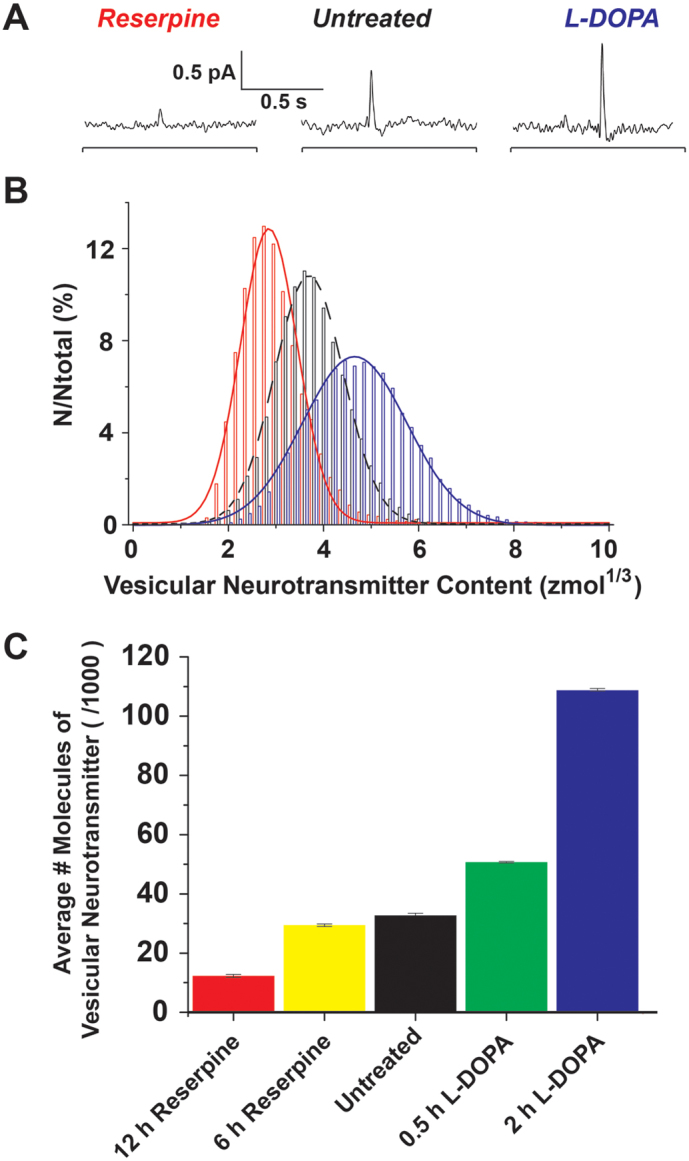Figure 2.

Pharmacological manipulation of striatal vesicle neurotransmitter content (A) Representative current spikes for mice receiving reserpine treatment (left, 12 h, 20 mg/kg), untreated (center), or L-DOPA treatment (right, 2 h, 50 mg/kg). (B) Normalized frequency histograms for reserpine-treated (red, 12 h, 20 mg/kg, distribution mean = 2.9 zmol1/3) and L-DOPA-treated (blue, 2 h, 50 mg/kg, distribution mean = 4.7 zmol1/3) striatal vesicular dopamine content versus control (black, 3.7 zmol1/3). Data are plotted as cube root transforms. Bin size = 0.2 zmol1/3. Fits were obtained from a Gaussian distribution of the data. (C) Cumulative analysis of striatal vesicles from mice with respect to drug and time after treatment. The time after pharmacological treatment is associated with regulation of neurotransmitter content in mouse synaptic vesicles. Mean numbers of molecules of vesicular dopamine for mice dosed with 20 mg/kg reserpine for 12 h and 6 h treatments were 18,000 ± 100 (N = 7,602) and 29,000 ± 400 (N = 3,029) molecules, respectively. Mean amount of vesicular dopamine from untreated mice striatal tissue was 33,000 ± 100 (N = 20,331) molecules. Mean numbers of molecules of vesicular dopamine for mice dosed with 50 mg/kg reserpine for 0.5 h and 2 h were 51,000 ± 200 (N = 23,700) and 71,000 ± 400 (N = 22,047) molecules, respectively. Mean values are significantly different from each other (one-way ANOVA, p < 0.001).
